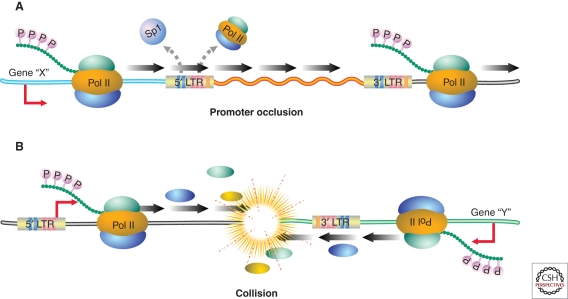Figure 3.
Two scenarios in which transcriptional interference may promote HIV-1 latency. In the first case, the HIV-1 provirus is integrated in the same polarity as an upstream gene within an intron of this gene. Read through by RNA Pol II initiating at the upstream promoter occludes the 5′LTR and displaces key transcription factors thereby promoting viral latency. Alternatively, the HIV-1 provirus and the cellular gene may be arranged in opposite polarity. In this situation, initiating polymerases collide, leading to decreased expression of one or both transcription units. The fact that latent HIV-1 proviruses are commonly found in actively transcribed genes suggests that transcriptional interference may be important in the maintenance of proviral latency.

